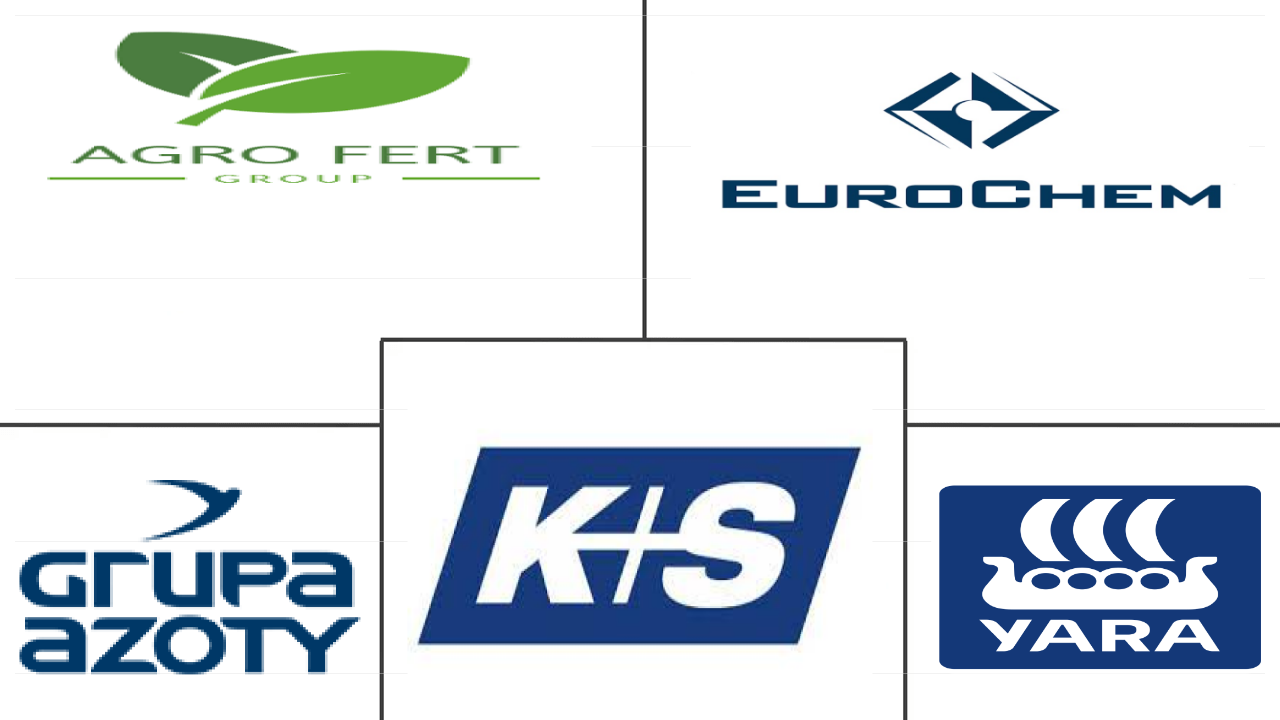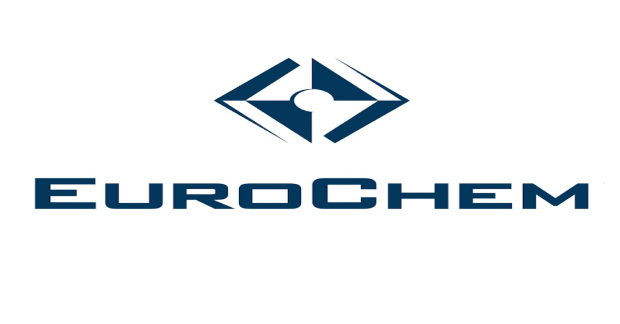Market Size of germany fertilizer Industry
| Icons | Lable | Value |
|---|---|---|
|
|
Study Period | 2017 - 2030 |
|
|
Market Size (2024) | USD 5.1 Billion |
|
|
Market Size (2030) | USD 6.65 Billion |
|
|
Largest Share by Crop Type | Field Crops |
|
|
CAGR (2024 - 2030) | 4.50 % |
|
|
Fastest Growing by Crop Type | Horticultural Crops |
|
|
Market Concentration | Medium |
Major Players |
||

|
||
|
*Disclaimer: Major Players sorted in no particular order |
Germany Fertilizer Market Analysis
The Germany Fertilizer Market size is estimated at 5.1 billion USD in 2024, and is expected to reach 6.65 billion USD by 2030, growing at a CAGR of 4.50% during the forecast period (2024-2030).
5.1 Billion
Market Size in 2024 (USD)
6.65 Billion
Market Size in 2030 (USD)
4.17 %
CAGR (2017-2023)
4.50 %
CAGR (2024-2030)
Largest segment by Nutrient
83.86 %
value share, Conventional, 2023
In 2022, they dominated the German fertilizer market. Conventional fertilizers, favored by many German farmers, stand out for their accessibility and affordability.
Largest Segment by Crop Type
77.12 %
value share, Field Crops, 2023
The effect of climatic conditions like drought and heatwaves and growing nutrient deficiencies in the country's soils are increasing the fertilizer consumption in the field crops.
Fastest Growing Speciality Type
7.08 %
Projected CAGR, CRF, 2024-2030
Organizations like IFDC and IFA are conducting training programs in Germany, emphasizing the production of diverse fertilizer products including controlled release formulations.
Largest segment by Application Mode
85.10 %
value share, Soil, 2023
The dominance of the soil application mode is attributed to the rise in the adoption of conventional fertilizers, CRFs, and SRFs, resulting in the soil mode's higher market share.
Leading Market Player
10.98 %
market share, EuroChem Group, 2022

Eurochem leads the fertilizer market by investing more in expanding production capacities and increasing the distribution network throughout the country.
Intensive agricultural practices are increasing fertilizer consumption
- Germany ranks as the fourth largest agricultural nation in the European region, with agriculture occupying over 57% of its land. The country boasts nearly 276,000 small farms, averaging 61 hectares each. Given the diverse soil types, farmers tailor their fertilizer usage to address nutrient deficiencies and optimize crop growth and quality.
- In recent years, Germany has seen a notable surge in fertilizer utilization. In 2022, fertilizer usage rose by 2.9% compared to the previous year, largely influenced by the country's climatic conditions. Farmers struggled with droughts and heatwaves and relied heavily on fertilizers and crop protection products to safeguard food security.
- In 2022, field crops dominated fertilizer consumption, accounting for 56.4%. This is primarily due to their expansive cultivation areas, intensive agricultural practices, and the need to address nutrient deficiencies resulting from continuous cultivation. Wheat, barley, rapeseed, and soybean take the lead as major crops. Germany's emphasis on domestic legume production, achieved through expanding cultivation areas, is set to drive the field crops market with a projected CAGR of 3.7% from 2023 to 2030.
- The turf and ornamental crop segment claims the second-largest market share in Germany, standing at 35.9% in 2022. These crops are witnessing heightened demand across various applications. Farmers, in response, are increasingly relying on crop nutrition to ensure robust growth and quality. This rising demand is poised to propel the market in the coming years.
Germany Fertilizer Industry Segmentation
Complex, Straight are covered as segments by Type. Conventional, Speciality are covered as segments by Form. Fertigation, Foliar, Soil are covered as segments by Application Mode. Field Crops, Horticultural Crops, Turf & Ornamental are covered as segments by Crop Type.
- Germany ranks as the fourth largest agricultural nation in the European region, with agriculture occupying over 57% of its land. The country boasts nearly 276,000 small farms, averaging 61 hectares each. Given the diverse soil types, farmers tailor their fertilizer usage to address nutrient deficiencies and optimize crop growth and quality.
- In recent years, Germany has seen a notable surge in fertilizer utilization. In 2022, fertilizer usage rose by 2.9% compared to the previous year, largely influenced by the country's climatic conditions. Farmers struggled with droughts and heatwaves and relied heavily on fertilizers and crop protection products to safeguard food security.
- In 2022, field crops dominated fertilizer consumption, accounting for 56.4%. This is primarily due to their expansive cultivation areas, intensive agricultural practices, and the need to address nutrient deficiencies resulting from continuous cultivation. Wheat, barley, rapeseed, and soybean take the lead as major crops. Germany's emphasis on domestic legume production, achieved through expanding cultivation areas, is set to drive the field crops market with a projected CAGR of 3.7% from 2023 to 2030.
- The turf and ornamental crop segment claims the second-largest market share in Germany, standing at 35.9% in 2022. These crops are witnessing heightened demand across various applications. Farmers, in response, are increasingly relying on crop nutrition to ensure robust growth and quality. This rising demand is poised to propel the market in the coming years.
| Type | ||||||||||||||||||||||||||||||
| Complex | ||||||||||||||||||||||||||||||
|
| Form | ||||||
| Conventional | ||||||
|
| Application Mode | |
| Fertigation | |
| Foliar | |
| Soil |
| Crop Type | |
| Field Crops | |
| Horticultural Crops | |
| Turf & Ornamental |
Germany Fertilizer Market Size Summary
The Germany Fertilizer Market is poised for significant growth, driven by the country's status as a leading agricultural nation in Europe. With agriculture occupying a substantial portion of its land, Germany has a diverse range of soil types that necessitate tailored fertilizer applications to enhance crop yield and quality. The market has experienced a notable increase in fertilizer usage, influenced by climatic challenges such as droughts and heatwaves, which have compelled farmers to rely more on fertilizers to ensure food security. Field crops, particularly wheat, barley, rapeseed, and soybean, dominate fertilizer consumption due to their extensive cultivation and the need to address nutrient deficiencies. The emphasis on domestic legume production is expected to further bolster the field crops market. Additionally, the turf and ornamental crop segment holds a significant share, reflecting the rising demand for crop nutrition to support robust growth and quality.
The market landscape is moderately consolidated, with major players like AGROFERT, EuroChem Group, Grupa Azoty S.A. (Compo Expert), K+S Aktiengesellschaft, and Yara International ASA holding a substantial portion of the market share. Recent strategic acquisitions, such as AGROFERT's purchase of Borealis' nitrogen business and K+S's acquisition of a stake in a South African trading company, highlight the ongoing efforts to expand and strengthen market positions. These developments are expected to enhance the companies' capabilities in providing fertilizers and technical nitrogen products across Europe and beyond. The demand for nitrogen, potash, and phosphorus remains high, driven by the need to address soil nutrient deficiencies and support the growth of key crops like oil rapeseed, which relies heavily on nitrogen fertilization.
Germany Fertilizer Market Size - Table of Contents
-
1. MARKET SEGMENTATION (includes market size in Value in USD and Volume, Forecasts up to 2030 and analysis of growth prospects)
-
1.1 Type
-
1.1.1 Complex
-
1.1.2 Straight
-
1.1.2.1 Micronutrients
-
1.1.2.1.1 Boron
-
1.1.2.1.2 Copper
-
1.1.2.1.3 Iron
-
1.1.2.1.4 Manganese
-
1.1.2.1.5 Molybdenum
-
1.1.2.1.6 Zinc
-
1.1.2.1.7 Others
-
-
1.1.2.2 Nitrogenous
-
1.1.2.2.1 Urea
-
1.1.2.2.2 Others
-
-
1.1.2.3 Phosphatic
-
1.1.2.3.1 DAP
-
1.1.2.3.2 MAP
-
1.1.2.3.3 SSP
-
1.1.2.3.4 TSP
-
-
1.1.2.4 Potassic
-
1.1.2.4.1 MoP
-
1.1.2.4.2 SoP
-
-
1.1.2.5 Secondary Macronutrients
-
1.1.2.5.1 Calcium
-
1.1.2.5.2 Magnesium
-
1.1.2.5.3 Sulfur
-
-
-
-
1.2 Form
-
1.2.1 Conventional
-
1.2.2 Speciality
-
1.2.2.1 CRF
-
1.2.2.2 Liquid Fertilizer
-
1.2.2.3 SRF
-
1.2.2.4 Water Soluble
-
-
-
1.3 Application Mode
-
1.3.1 Fertigation
-
1.3.2 Foliar
-
1.3.3 Soil
-
-
1.4 Crop Type
-
1.4.1 Field Crops
-
1.4.2 Horticultural Crops
-
1.4.3 Turf & Ornamental
-
-
Germany Fertilizer Market Size FAQs
How big is the Germany Fertilizer Market?
The Germany Fertilizer Market size is expected to reach USD 5.10 billion in 2024 and grow at a CAGR of 4.50% to reach USD 6.65 billion by 2030.
What is the current Germany Fertilizer Market size?
In 2024, the Germany Fertilizer Market size is expected to reach USD 5.10 billion.

